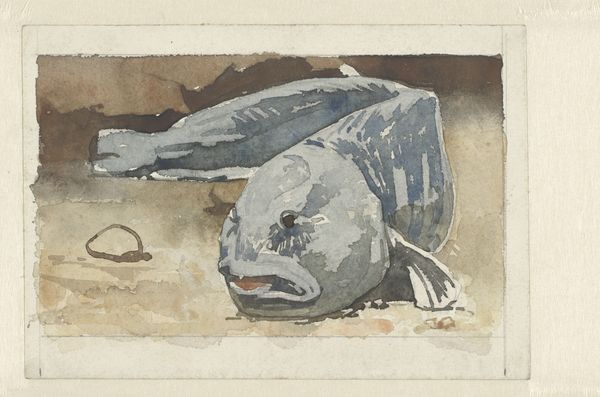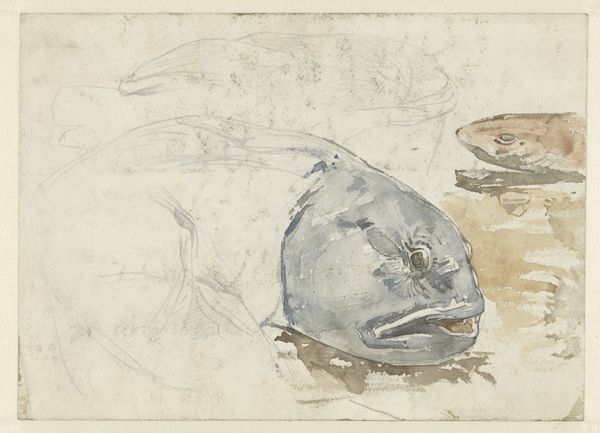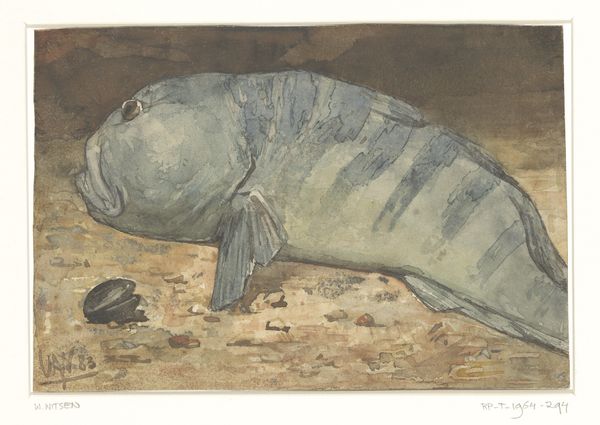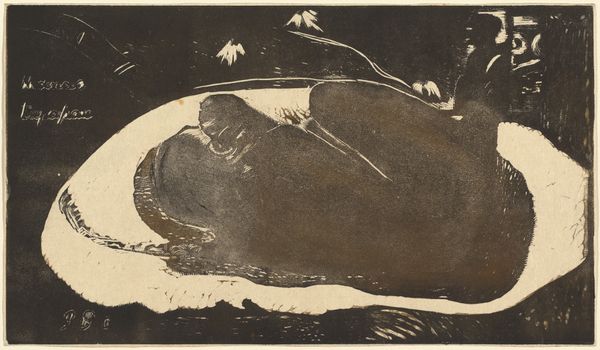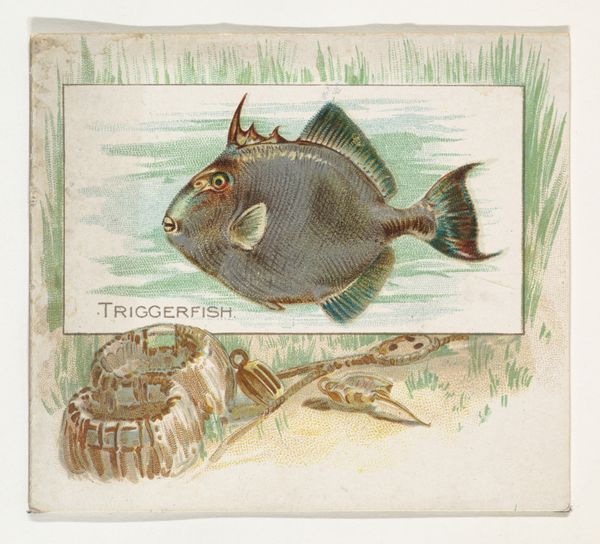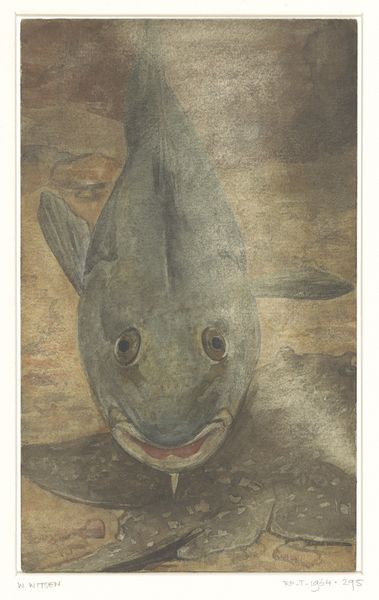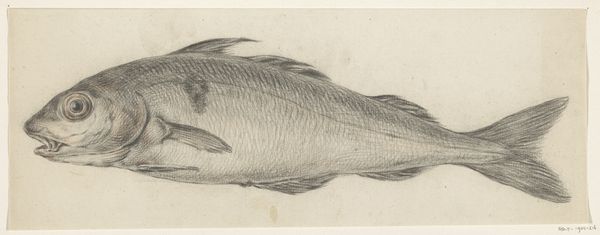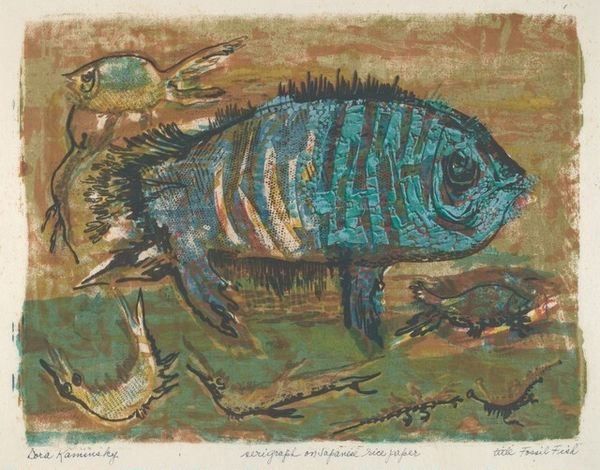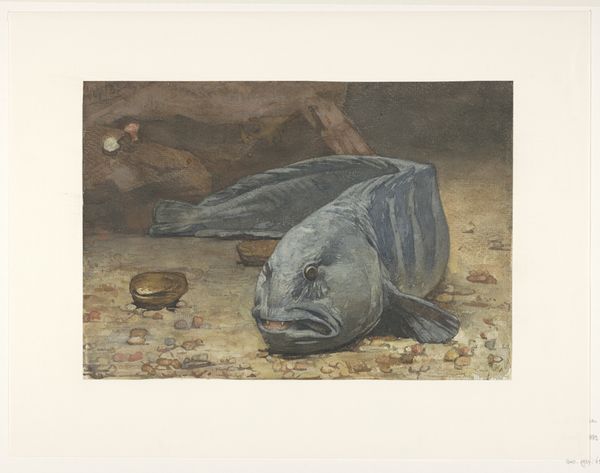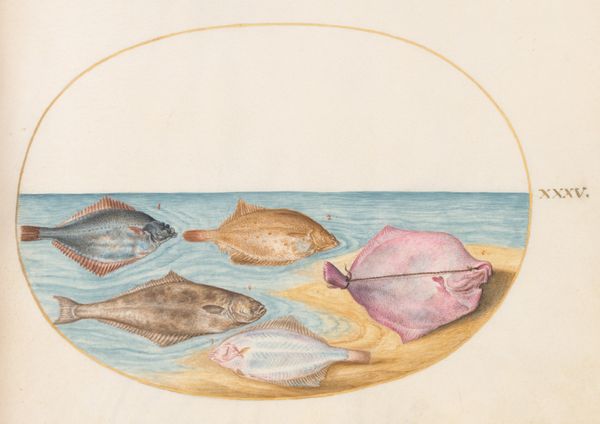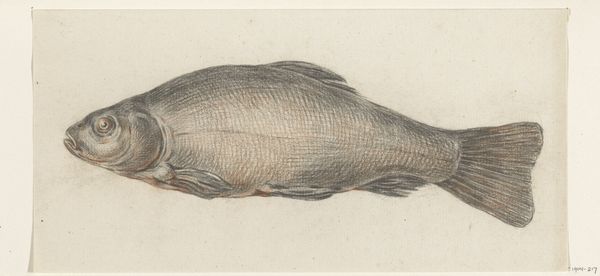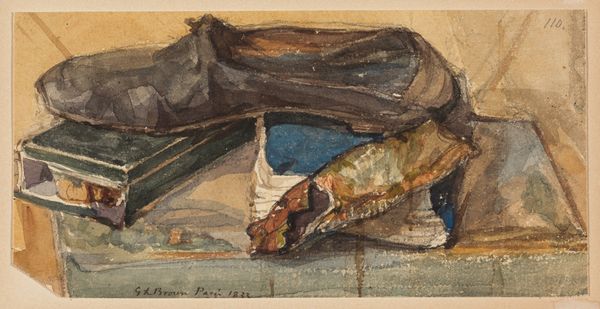
Dimensions: height 178 mm, width 125 mm
Copyright: Rijks Museum: Open Domain
Curator: Willem Witsen's "Vis," created between 1870 and 1923, currently resides here at the Rijksmuseum. It's a work that intrigues me with its stark presentation. Editor: The fish is dead; its eye has no sparkle. I can almost smell the briny scent rising from the watercolor. What about the work resonates with you from your perspective? Curator: Beyond the immediate representation, it strikes me as a commentary on consumption, a stark portrayal of animal exploitation mirroring social hierarchies. We see the subject stripped of agency, rendered an object of display, not unlike marginalized communities whose bodies have historically been subjected to the gaze of the powerful. Editor: An incisive interpretation. Looking at it materially, one sees Witsen has chosen a fluid medium, watercolor, to depict a creature intimately linked to water. Do you see intentionality in using this fragile, flowing medium for a sea creature now so very still? Curator: Precisely. The softness of watercolor, its potential for both vibrant life and faded resignation, enhances its poignancy. It's interesting to note that he was known for capturing intimate glimpses of Amsterdam, a progressive city that became home to feminist avant-gardists. Editor: Let’s not forget, the act of observation itself has socio-political implications, considering whose experiences and perspectives dominate visual representation. One sees a study in contrasting textures, too. The smoothness of the fish's body offset by the implied roughness of the surface upon which it lies. It emphasizes the divide between the natural world and its forced assimilation into human space. Curator: That contrast is incredibly powerful, embodying both a literal and metaphorical dissonance. Editor: Well, it highlights, among other things, that even a simple still life, such as this, contains multiple points of analysis across aesthetic boundaries. Curator: A somber memento mori indeed, brought vividly to our contemporary understanding by considering how labor, class, gender, and politics permeate the lens through which we analyze.
Comments
No comments
Be the first to comment and join the conversation on the ultimate creative platform.
